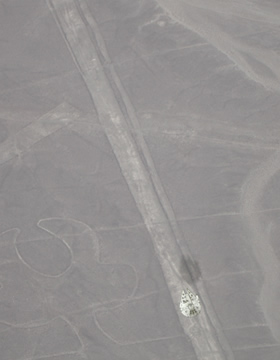Ok, so you’ll see a new category now under the Asides category. That of ‘The Company.’
And what’s it going to be about? Well, it’s going to cover the tribulations, stresses and joys of building up our web design company, Interconnect IT. The updates won’t necessarily be regular, lucid or sane, but they might be interesting. I won’t even be putting them in the highlight’s category so they show as headlines – you either have to come looking, or you need to subscribe to the RSS feed to this site, where the posts will always show up.
Realistic Pricing
One of the hardest things in business is to come up with a price structure that works. You can easily underprice yourself, convinced that what you do is actually quite easy, and end up trading like mad without actually ever making any money. I had an interesting case this week, where a chap running a fitted furniture company in Liverpool was interested in a website. He’d seen some nice sites from rival firms. Unfortunately he didn’t have an internet connection, so we couldn’t review them together, and the 3G broadband dongle for my laptop is still to arrive. Anyway, we discussed why Interconnect IT is such a great development company, and why he should consider us for a site.
And then there was a risk of it all going downhill. When asked what sort of budget he’d thought of, he came up with the figure of £250. Given that no web design company in the UK can charge less than £45 an hour, he was obviously believing that a site built to professional standards would take about 5.5 hours. Let’s break that down:
Initial meeting – 45 minutes.
Design and layout typography for a simple header and logo – 30 minutes.
Colour pre-defined template to match branding and export for css – 30 minutes.
Create new client directories, copy over notes and so on, make copies of client code – 30 minutes.
Obtain images, with permission for use and prepare them for the six pages required – 1 hour or more.
Purchase domain (finding a suitable name, and get approval) – 1 to 2 hours.
Set up server for the domain, e-mail addresses, security and so on – 1 hour.
Upload server side software (all our sites are dynamic), activate any plugins and so on – 30 minutes.
Option setting on the software – 15 minutes.
Insert supplied text, images and so on, and lay them out smartly – 1 hour.
Test the site on three Windows, two Linux and two Macintosh browsers – 1 hour.
Invoicing, chasing the invoice, banking it and so on – 1 hour.
Now this is for a very very basic site where we’ve done a minimal amount of custom work. As soon as demands grow, so does the time. And we’re also ignoring the development cost of what we’ve done in the past, yet we’re sitting on at least nine hours work for something really quite simple. That gives us £27 or so per hour. And we haven’t even talked about the cost of our server, office, equipment and so on.
We’ve worked it out, and we could actually do about fifteen of these sites per month. Our costs, if we were all earning minimum wage, are about £4000 a month. So we’d lose £250 a month, whilst earning minimum wage.
So what this chap was basically saying to me was that he valued our services at roughly the same level as shelf stackers in a supermarket.
But here’s one thing I’ll admit… it’s not his job to work out the value of what we do. It’s ours. And it’s our job to convince clients that what we do is both highly beneficial to their businesses, and very difficult to do well.









